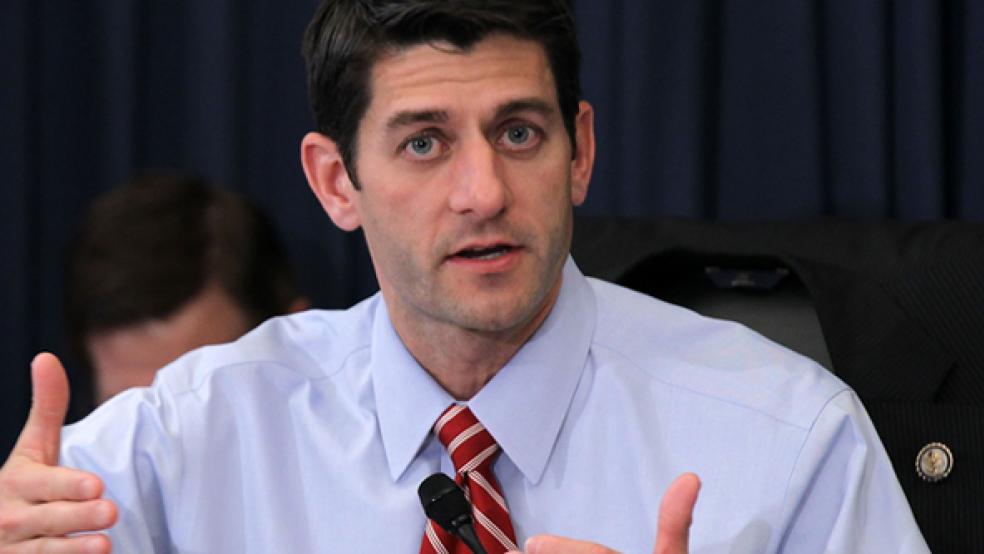In a perfect free market economy, where all prices are known and competition is unfettered, consumers can have a huge impact in reducing prices. That was one of the pillars of Obamacare.
Such a market doesn't wholly exist in health care, though. Where pricing for services is opaque, there may be little local competition, providers have a direct incentive to run up costs and consumers almost never have access to the real cost of care.
That's why federal budget recently proposed by House Budget Committee Chairman Paul Ryan (R-WI) will fail to make a dent in health care expenses. It hinges upon an ideal situation that has never existed, and won't exist without some radical changes.
The bedrock principle of Ryan's "premium-support" plan for partially privatizing Medicare is the assumption that if Medicare recipients can choose their own health plans, they will choose wisely and spend less on services.
Related: The Brain Trusts Behind the 2016 GOP Hopefuls
Under the Ryan plan, in 2024, those turning 65 would be offered a spate of private health plans through a "Medicare exchange." Coverage through the exchanges would be guaranteed and premiums would be paid for or subsidized through the government, depending on the cost of the plan. Those born before 1959 would remain in the existing Medicare system.
“This reform,” the Ryan budget document states, “also ensures affordability by fixing the currently broken subsidy system and letting market competition work as a real check on widespread waste and skyrocketing health-care costs. Putting patients in charge of how their health-care dollars are spent will force providers to compete against each other on price and quality.”
Although Ryan may be spot on the "widespread waste" in the health care system — which is encouraged by the fee-for-service model — he's off the mark on the power of consumers and a premium-support system to drive down costs.
Fee-for-service pays providers for each delivery of services; the more care or tests provided, the greater their compensation, regardless of how effective that care is in helping the patient. Volume is rewarded more than long-term health.
Why Premium-Support Is Flawed
Neither premium-support nor the consumer-driven model are new ideas. Ryan has been proposing these ideas for several years. In the private sector, consumer-driven plans have been around for more than a decade in the form of high-deductible health plans.
I'm well acquainted with high-deductible plans since I've had one for my family since 2001. While it provides an incentive for me to choose wisely on health care, since my deductible is $5,800, it has not reduced the overall cost of my care.
Unlike big employers and insurers, I have almost no bargaining power with providers on my own. I've never been able to negotiate a 40 percent to 60 percent discount off of the "retail" price of care like a big insurer or employer. I never know relative price schedules, which are rarely disclosed because hospitals and other providers don't make public their "chargemaster" price lists. I can't shop for health care the way I would for a car or appliance. Almost none of the information is online and comparable in a user-friendly format.
When my wife needed a colonoscopy, for example, did we have enough information to pick the right specialist and hospital, much less fair pricing? We had to trust her oncologist, who provided a referral.
Even if I was able to shop around, how would I even know what a reasonable price was for a competent doctor? I wasn't comparing similar big-screen TVs. There are no bizrate.com-type sites for this kind of information. I would have relished the idea of finding a best price for this service provided by the best doctors, but no Web site exists to tell me this in meaningful detail and the doctors and hospitals are not helping me find out what I need to know.
We can't shop for something we don't fully understand. Dr. Davis Liu, a physician and blogger, has likened the consumer-driven model to the mistakes Americans make when trying to discern complex retirement plans:
The analogies to health care and specifically consumer-driven health plans should be clear. Workers don’t save adequately for retirement even when in their best interest. It’s very likely that workers won’t save money adequately to fund future health expenses. After all, if people can’t fund retirement, something we undoubtedly all look forward to, which one of us is willing to saving [SIC] for chemotherapy or open heart surgery, which no one wants?
Consumer-driven health care has followed the perilous lead of 401(k) investing: You are given a choice of funds and you must decide how to save enough for retirement. Even when given these choices with all fund costs disclosed, Americans are still failing to save enough and are often overcharged for the funds within their plans. How much is enough? Which funds should be chosen? What mix of funds will balance risk and return?
Without the knowledge of markets, portfolio theory and investment advice, it's nearly impossible to make a good decision. Few have this training, so many make bad choices. This fractured model is also applied to health care decision making.
If you want to know how consumer-driven health care has fared, you'd need look no further than the employer-based market, where insurers have been offering high-deductible plans for years. Yet there's no clear evidence that patients are any better off — or are saving money. The Employee Benefit Research Institute has found that:
- Satisfaction rates are lower but increasing: Consumer-driven plan participants continue to be less satisfied with various aspects of their health plan than those with more comprehensive insurance.
- More missed care: Individuals in consumer-driven plans report using health services at rates similar to those in comprehensive plans. But in all three annual Employee Benefit Research Institute/Commonwealth surveys, people in these plans were more likely to skimp on needed medical care or medications because of cost than were those in more comprehensive plans.
- Health-care information still not available: Over the three years of the EBRI/Commonwealth survey, no significant gains were reported by plan participants in the amount of information available on provider cost and quality, two keys to making the plans a success.
- Lack of information: Other research suggests that consumer-driven plans may be doomed if the lack of consumer information and education is not addressed.
Are patients in consumer-driven plans spending less and hurting themselves by doing so? When it comes to out-of-pocket expenses, that may be possible. And once medical bills cross the deductible, it doesn't matter, since insurers pick up the tab at that point.
What makes the consumer-driven model a non-starter on the cost front is the fact that it doesn't make a dent into the fee-for-service model, which dominates Medicare and most of private health care. Providers have an incentive for doing tests, surgeries and procedures. The more they do, the more they get paid — even if they may be medically unnecessary or wasteful.
If consumers were armed with information that could tell them when a procedure or surgery won't meaningfully improve their quality of life over time — or would make it worse —that would be incredibly helpful and shave billions from the nation's health expenditures. A rational system could then focus on outcomes, quality of life and well-being. Doctors would be compensated based on how the patient fares over time, instead of how providers can bill (or overbill) for services today.
Any premium-support plan that doesn't address the fee-for-service conflict is missing the point on why American health care is costing more every year and on an unsustainable track. Competition will never have any impact unless buyers have practical knowledge and can use transparent information to their advantage.
Top Reads from The Fiscal Times:
- Hospitals Plot the End of Insurance Companies
- High Tax States Are Losing Billions
- Top Dem Hints at Forbidden Entitlement Cuts






